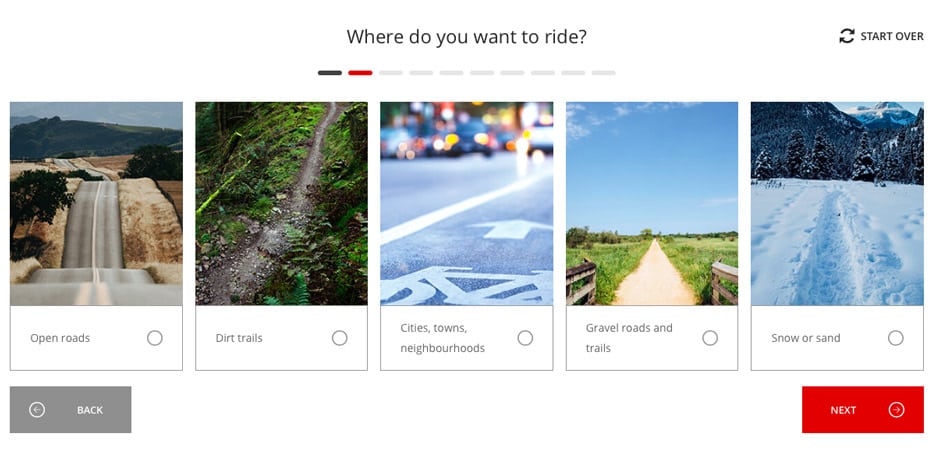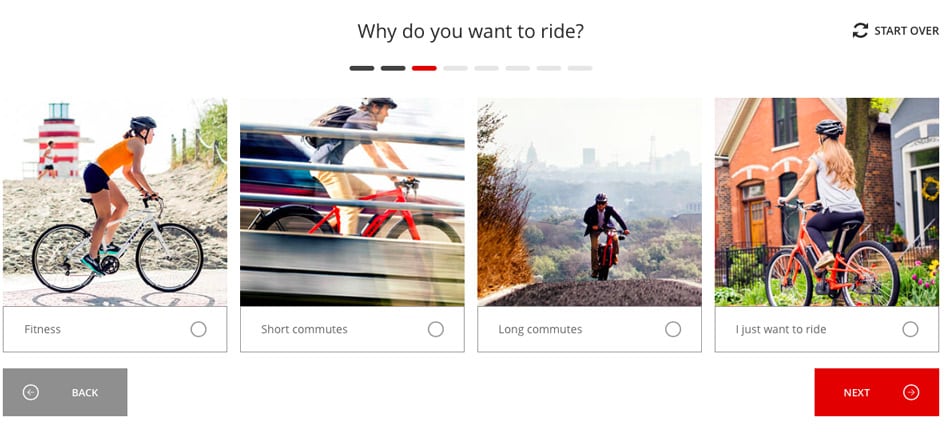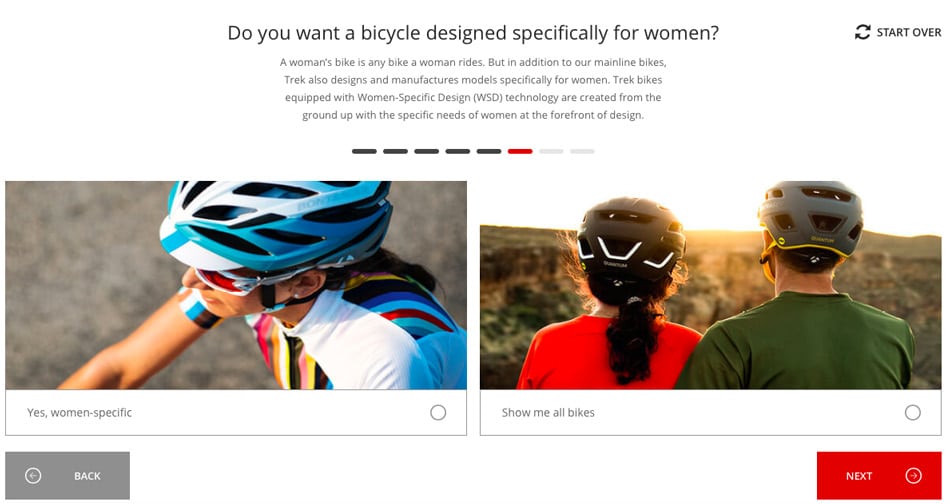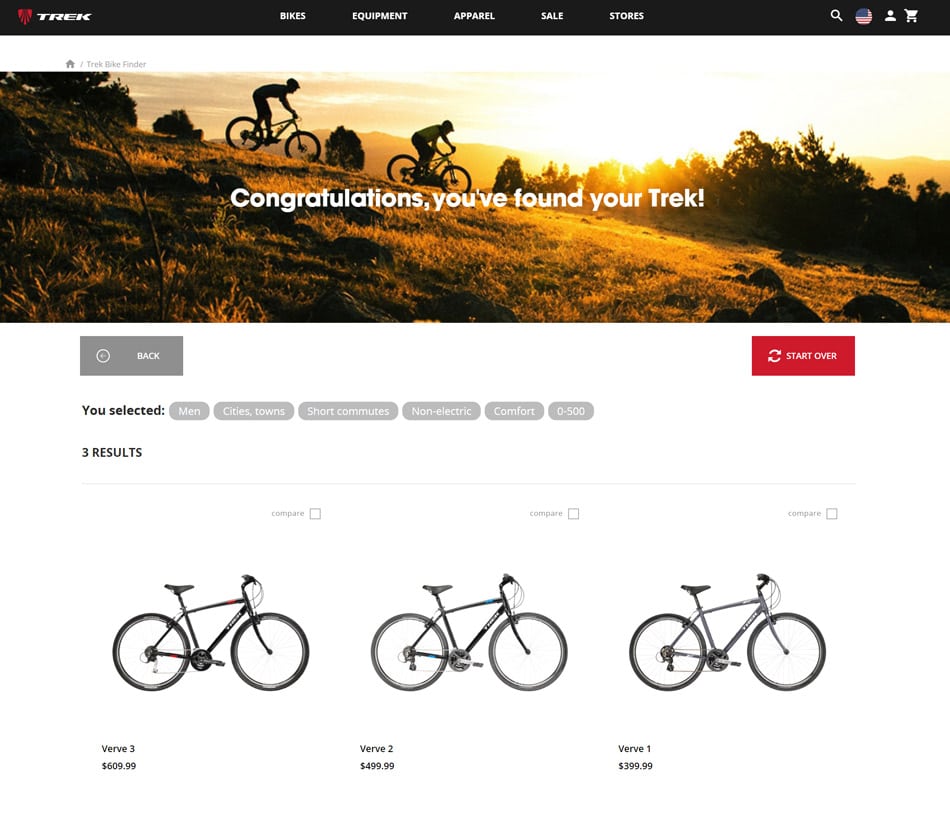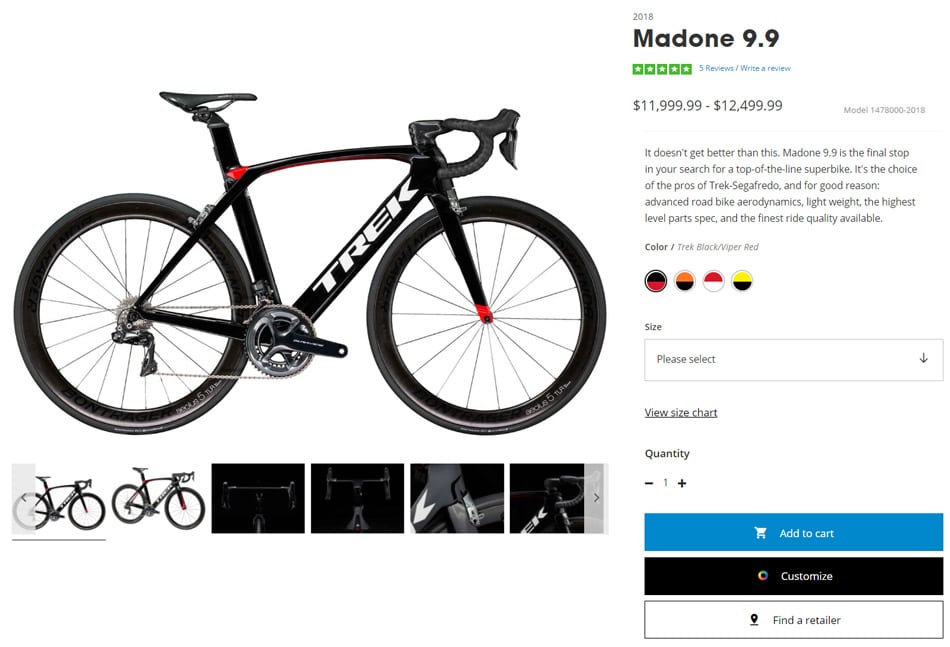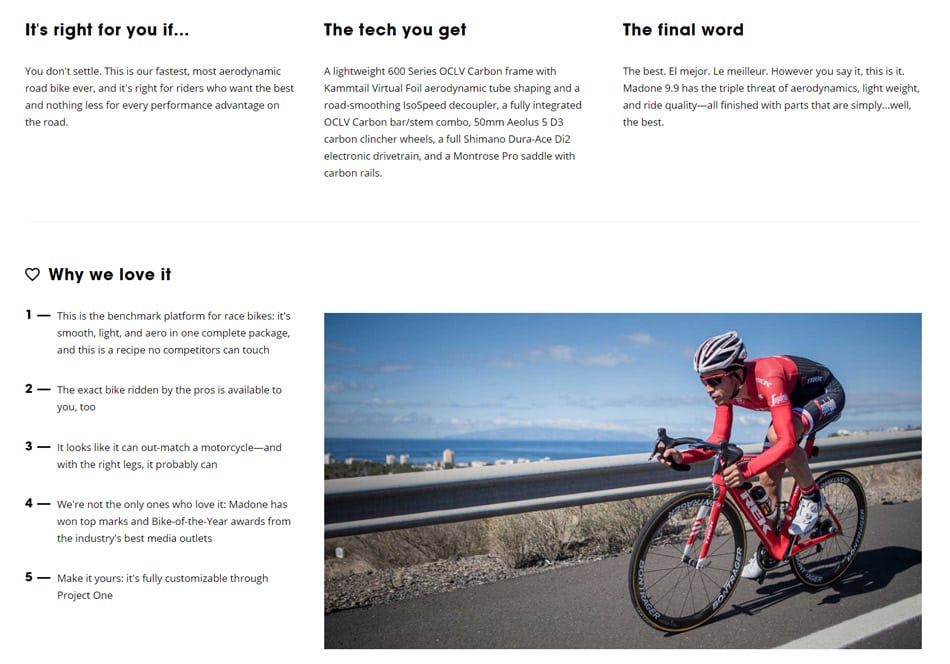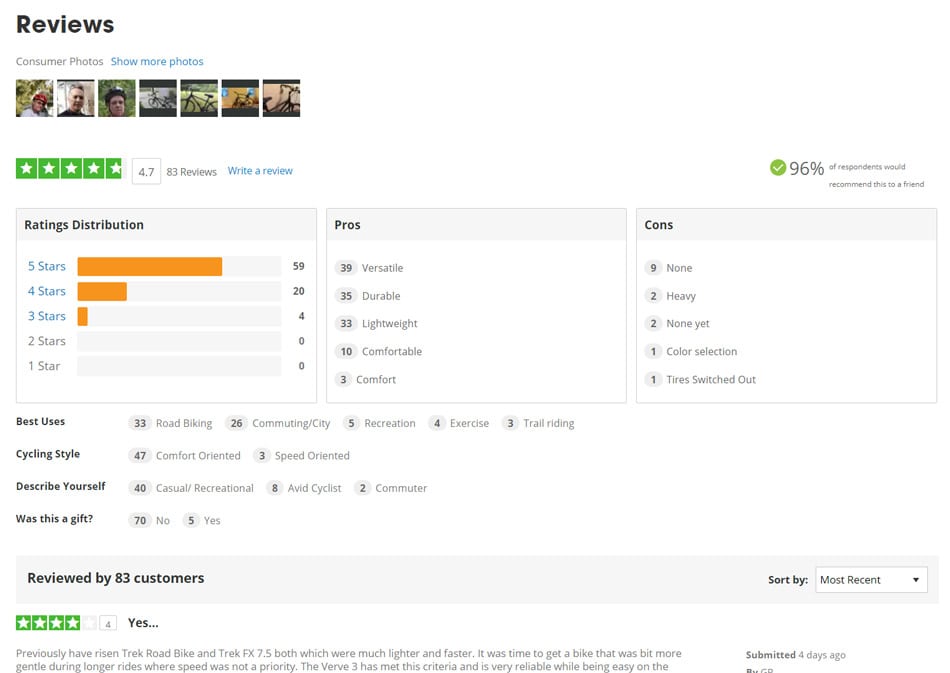It turns out that 1976 was quite a year for enterprise and innovation in the US. While a young Steve Jobs was founding the Apple Computer Company in his garage in California, Richard Burke was attempting to disrupt the old order of bicycle manufacturing by co-founding Trek Bikes, 2,000 miles away in Wisconsin.
Up until that point, European and Japanese bikes dominated the international cycling scene, while Schwinn had the lion’s share of the domestic market. Starting the company was a big leap of faith by Burke and his fellow co-founder Bevel Hogg.
Like Apple, Trek had humble beginnings. The first Trek bike was manufactured by five employees in a rented red barn in Waterloo, a small town in Wisconsin.
Forty years on, and Trek is now the largest manufacturer of bikes in the US and one of the most trusted and well-respected brands in the world. The company has more than 2,000 employees (half of whom are based in Waterloo), sells 1.5 million bikes a year and turns over around one billion dollars annually.
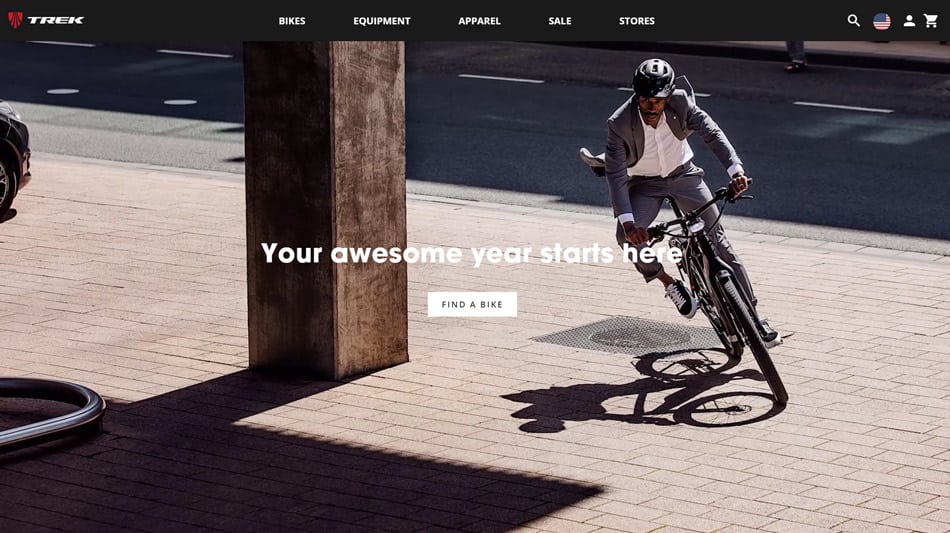
To achieve this growth Trek positioned itself as a pioneer. It became the first bike manufacturer to mass-produce aluminum bikes before moving onto high-end carbon material. The company was also at the forefront of female-friendly design, creating the Women’s Specific Design bikes and accessories at the turn of the century.
But more importantly, Trek has always put its customers’ needs at the forefront of everything it does.
In a recent interview, Burke’s son John – now president of the company – said:
“To me, the size (of the company) doesn’t matter. What matters is your body of work. How good are the products? How incredible is the service? How are we taking care of our customers? If we do an amazing job of taking care of our customers, the business will grow, and that’s what I like to focus on.”
It’s this philosophy that makes Trek one of the most trusted brands in the world. But how does it look in practice?
Giving the Brand a Human Face
Trek’s market-leading reputation isn’t solely reserved for the bike manufacturing arm of its business. It also set the trend when it became one of the first bicycle brands to sell products online directly through its own website, as well as through a number of third-party retail partners.
But far from creating a platform solely to push products, Trek has developed a content-rich area that serves as a haven for bike enthusiasts.
A whole section of Trek’s website is devoted to storytelling, which creates a positive narrative around the brand and cycling in general. The page is populated with inspirational stories, such as highlighting groups of cyclists advocating for gender equality in the sport and More Than a Sport, to give readers an emotional connection with Trek’s vision.
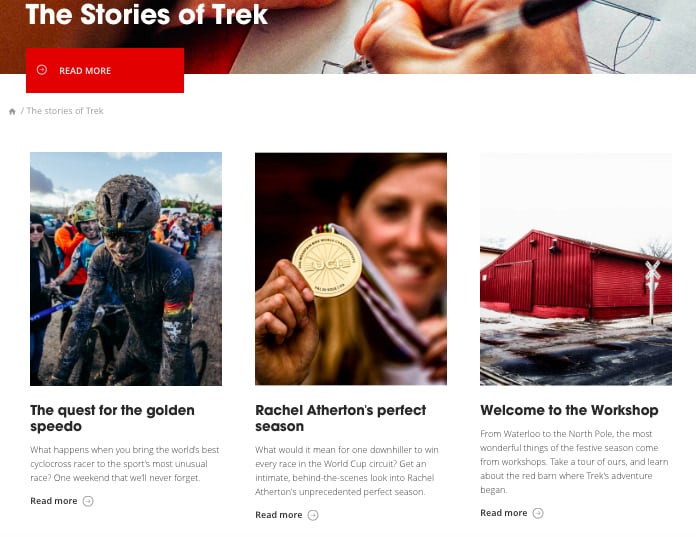
Trek also touches on its origins to give its brand a more human face.
Consumers today expect entertaining content from the brands they do business with, but companies really earn their stripes when they create content that provides solutions.
Trek’s Spring and Summer Road Lookbook is a good example of helpful targeted content for road bike riders. Trek’s Racing page provides the major enthusiasts with news on the latest cycling races, striking images of competitions, and even tips and advice for people planning to visit race events.
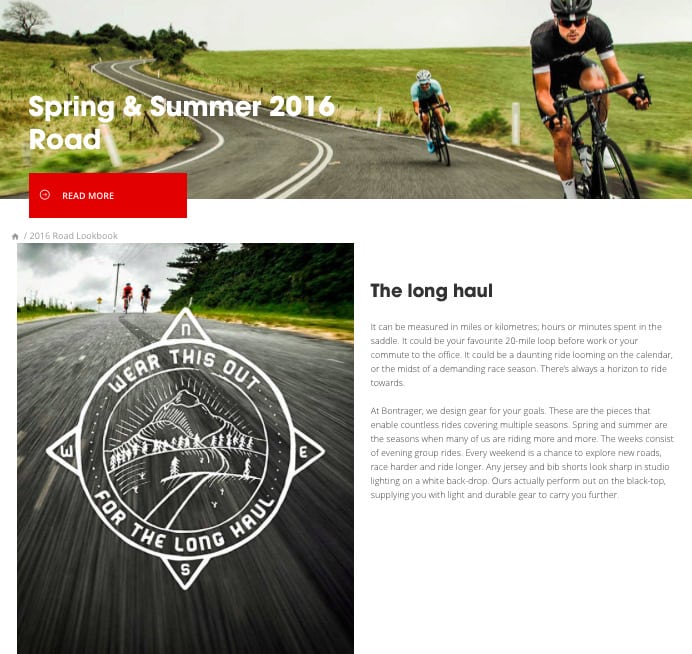
The Importance of Needs-based Assistance
As Trek’s business continues to grow, so does consumer awareness around the brand. As such, its clientele has diversified beyond the traditional cycling enthusiast core. Sponsoring teams in high profile events like the world-famous Tour de France road race has helped create a surge of interest from novice riders.
However, content created for enthusiasts won’t necessarily resonate with those new to cycling, so Trek has to engage novices in other ways to position the company as a trusted brand.
And the best way to engage people who are unsure is to educate and advise them.
At Digital Advice Live! 2017, Trek’s Marketing Project Manager Curtis Bice said that new riders were crying out for help to choose the right product because in most instances their knowledge was limited or non-existent.
“We have over 300 different bike models on our website and someone who is not very familiar with bikes is going to come to the website and get very confused very quickly,” said Bice.
He explained that tools like faceted filter search were limited in this situation as they require an element of existing knowledge and focus mainly on technical features rather than benefits. With their interactive “Help me choose” Digital Advice solution, Trek manages to make it much easier for novices to decide and shop for their bike online.
Download the case study to find out how Trek doubled the conversion rate with their Digital Advice solution here.
By integrating an intuitive digital assistant at various entry points on the website, Trek ensures that new visitors and novice riders don’t get overwhelmed by the extensive product range. They are picked up and guided to products that are relevant to them and fit their needs without having to devote a huge amount of research time to an unfamiliar topic.
Trek’s interactive Bike Finder asks a series of questions to discover their core needs before recommending an appropriate bike model based on their answers.
Providing Detailed Product Information
Getting consumers to the right product quickly is crucial, but equally important is the brand’s ability to show why they have recommended specific products. It demystifies the process and gives them confidence in making purchase decisions – particularly for high-ticket items such as an expensive bike.
After shoppers have completed the digital Bike Finder, they are led to informative and well-thought-out product pages.
And Trek’s product pages come loaded with detail and educational content.
When viewing a certain model of bike, website users are presented with several clear pictures showing the bike from different angles, as well as short and engaging articles or videos touching on key features of the model that show consumers the Trek-specific benefits and features.
But that’s just the beginning.
After discovering benefits through the digital assistant, consumers are able to go further through to a comprehensive product overview to get a full picture of the bike they’re considering. The page includes a lot of detail around technical specification, sizing and fit, as well as tips in a user-friendly tone, making the whole process feel like it’s tailored to each individual customer.
Trek also demonstrates its transparency credentials by publishing all customer reviews at the bottom of each product page where they can quickly explore the most common pros and cons, as well as ‘best uses’ for the bike.
Blending the online and offline world
Trek pioneered direct selling through its own website in the biking sector. Many retail partners get jittery when brands decide to go DTC (direct-to-consumer) and speak or sell to consumers directly. But Trek has an innovative way to address these concerns.
Once a customer chooses the model of bike they wish to buy, Trek will redirect the shopper to a range of retail partners in their area where they can purchase the product. In the US and UK, customers also have the option to purchase bikes directly from the website. The bike will then be shipped to a retailer, where it will be professionally assembled ready for home delivery or the customer to collect.
Trek takes ownership of the customer journey and has taken its retailer partners on board to ensure that the best possible experience is made available to Trek customers – online and offline.
Trek Bicycle is a great example of a brand that makes needs-based assistance a central part of its strategy to deliver an outstanding customer experience. It strengthens Trek’s image of a trusted partner with a loyal following.
To summarize, Trek does this by
- Showing the human face of the company
- Demonstrating expertise and knowledge with exclusive content and interactive advice
- Removing inhibiting complexity by helping novice and expert shoppers discover and choose the most suitable items quickly
- Educating customers and explaining the benefits of the Trek brand in a personalized, needs-based way
- Making the customer journey and the purchase process entertaining and seamless – online and offline

